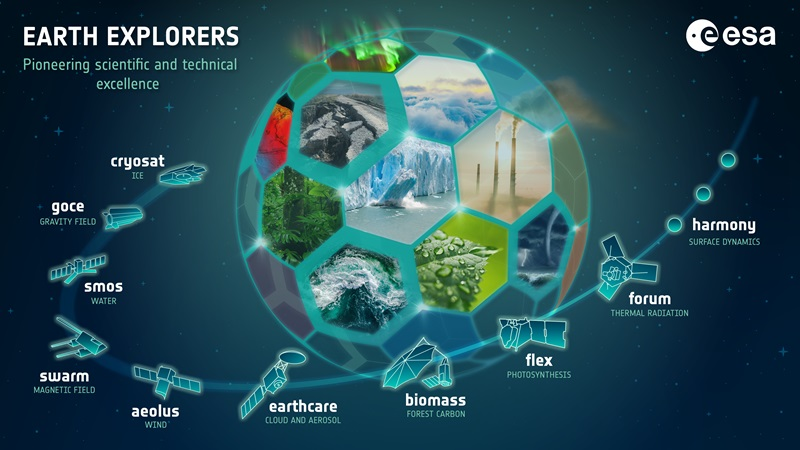Context: The European Space Agency (ESA) will launch its Biomass mission on April 29, 2025, aboard the Vega C rocket.
About Biomass Satellite
Biomass Satellite is a European Space Agency (ESA) Earth observation satellite. It is the first satellite to carry a P-band radar, a long-wavelength radar that penetrates deep into forest canopies.
Key Objectives of the Biomass Mission
- Estimate Above-Ground Forest Biomass.
- Provide detailed 3D forest structure maps.
- Understand the forest’s role in carbon storage.
- Improve climate change predictions using accurate biomass data.
- Observe ice sheet movement in Antarctica.
Satellite Payload
- Synthetic Aperture Radar (SAR) for mapping Earth’s surface.
- It is fitted with a large 12-meter antenna.
- It is the first satellite to use P-band SAR (long-wave radar):
- Longer wavelengths can penetrate dense forest canopies enabling detection of biomass from canopy to roots.
- P-band SAR can “see through” dense foliage. It can measure carbon stored in branches, trunks and ground biomass.
- Biomass is the seventh mission under ESA’s Earth Explorer programme.
| Earth Explorers programme |
| The Earth Explorers programme consists of a series of satellites that share the common goal of advancing Earth science by helping answer principal scientific questions through observation of Earth’s key systems.
|



 Advanced Air Defence Radars: Types, Comp...
Advanced Air Defence Radars: Types, Comp...
 Ion Chromatography, Working and Applicat...
Ion Chromatography, Working and Applicat...
 Broadly Neutralising Antibodies (bNAbs):...
Broadly Neutralising Antibodies (bNAbs):...

























